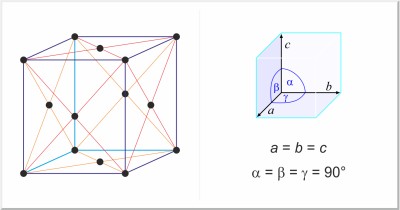LEAD
CARBON GROUP
| Atomic number: | 82 |
| Group numbers: | 14 |
| Period: | 6 |
| Electronic configuration: | [Xe] 4f14 5d10 6s2 6p2 |
| Formal oxidation number: | +2 +4 |
| Electronegativities: | 1.8 |
| Atomic radius / pm: | 175 |
| Relative atomic mass: | 207.2(1) |
Lead has been known since ancient times. The origin of the name comes from the Latin word plumbum meaning liquid silver. It is a very soft, highly malleable and ductile, blue-white shiny metal that tarnishes in moist air but is stable in oxygen and water. Lead dissolves in nitric acid and its compounds are toxic by inhalation or ingestion. The toxins have a cumulative effect. Lead is found most often in ores called galena or lead sulfide (PbS). It is used in solder, shielding against radiation and in batteries. The price of 99.5 % pure lead granules is 28.70 € for 500 g.
| Density / g dm-3: | 11350 | (293 K) |
| 10678 | (m.p.) | |
| Molar volume / cm3mol-1: | 18.26 | (293 K) |
| 19.40 | (m.p.) | |
| Electrical resistivity / µΩcm: | 20.648 | (20 °C) |
| Thermal conductivity / W m-1K-1: | 35.3 |
| Melting point / °C: | 327.46 |
| Boiling point / °C: | 1749 |
| Heat of fusion / kJ mol-1: | 5.121 |
| Heat of vaporization / kJ mol-1: | 177.8 |
| Heat of atomization / kJ mol-1: | 195.74 |
| First ionization energy / kJ mol-1: | 715.60 |
| Second ionization energy / kJ mol-1: | 1450.40 |
| Third ionization energy / kJ mol-1: | 3081.50 |
| in the atmosphere / ppm: | - |
| in the Earth's crust / ppm: | 8 |
| in the oceans / ppm: | 0.003 |
| Crystal structure: | face-centered cubic |
| Unit-cell dimensions / pm: | a=495.00 |
| Space group: | Fm3m |

| Isotope | Relative atomic mass | Mass percent (%) |
|---|---|---|
| 204Pb | 203.973029(3) | 1.4(1) |
| 206Pb | 205.974449(3) | 24.1(1) |
| 207Pb | 206.975881(3) | 22.1(1) |
| 208Pb | 207.976636(3) | 52.4(1) |
| Balanced half-reaction | Eo / V | |
|---|---|---|
| Pb4+ + 2e- → Pb2+ | +1.694 | |
| Pb2+ + 2e- → Pb(s) | - 0.126 | |
| Pb2+ + 2e- → Pb(s) | - 0.14 | (1 mol dm-3 HClO4) |
| Pb2+ + 2e- → Pb(s) | - 0.29 | (1 mol dm-3 H2SO4) |
| 3PbO2(s) + 2H2O + 4e- → Pb3O4(s) + 4OH- | +0.295 | |
| PbO2(s) + 4H+ + 2e- → Pb2+ + 2H2O | +1.455 | |
| PbO2(s) + 4H+ + SO42- + 2e- → PbSO4(s) + 2H2O | +1.685 | |
| PbO2(s) + H+ + 2e- → HPbO2- | +0.621 | |
| 3PbO32- + 10H+ + 4e- → Pb3O4(s) + 5H2O | +2.515 | |
| PbO32- + 4H+ + 2e- → PbO(s) + 2H2O | +2.001 | |
| PbO32- + 3H+ + e- → HPbO2- + H2O | +1.547 | |
| PbO32- + 6H+ + 2e- → Pb2+ + 3H2O | +2.375 | |
| Pb3O4(s) + H2O + 2e- → 3PbO(s) + 2OH- | +0.249 | |
| Pb3O4(s) + 8H+ + 2e- → 3Pb2+ + 3H2O | +2.094 | |
| Pb3O4(s) + 2H2O + 2e- → 3HPbO2- + H+ | - 0.390 | |
| PbO(s) + 2H+ + 2e- → Pb(s) + H2O | +0.249 | |
| PbSO4 + 2e- → Pb(s) + SO42- | - 0.350 | |
| HPbO2- + 3H+ + 2e- → Pb(s) + 2H2O | +0.702 | |
| Pb(s) + 2H+ + 2e- → PbH2 | - 1.507 |
| 81 Thallium | ← | 82 Lead | → | 83 Bismuth |
Citing this page:
Generalic, Eni. "Lead." EniG. Periodic Table of the Elements. KTF-Split, 13 Feb. 2025. Web. {Date of access}. <https://www.periodni.com/pb.html>.
Articles and tables
- Periodic table
- Online calculators
- Scientific calculator for chemists
- Gas laws calculator
- Molar mass calculator
- Angle converter
- Roman numerals converter
- Number systems converter
- Preparation of solutions
- Labeling of chemical containers
- Oxidation numbers calculator
- ARS method
- Oxidation number change method
- Ion-electron method
- Gauss elimination method
- Memory game
- Find the pairs
- Articles and tables
- Chemistry
- List of abbreviations and acronyms
- Crystal systems and Bravais lattices
- GHS - Hazard pictograms
- NFPA 704 Hazard Diamond
- Fundamental physical constants
- Solubility product constants
- SI - International System of Units
- Composition of mixtures and solutions
- Stoichiometric calculations
- Chlorinity and salinity of seawater
- Rare earth elements (REE)
- Ecology
- Web design
- Chemistry dictionary
- Chemistry
- Downloads
- ≡ Menu
